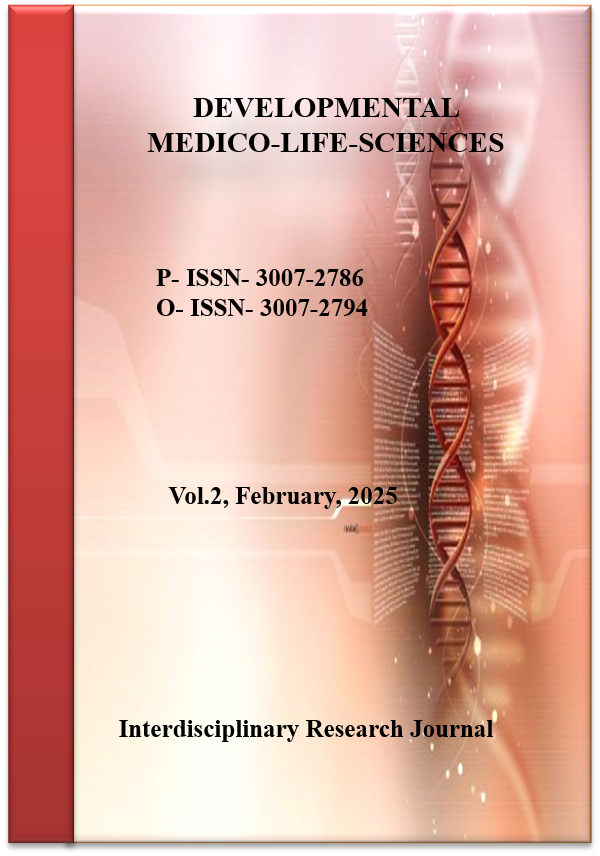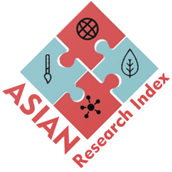Assessing the Impact of Socio-Demographic Factors on Depression and Clinical Outcomes Among Hemodialysis Patients in Pakistan. A cross-Sectional Observational Study
Socio-Demographics, Depression, and Dialysis in Pakistan
DOI:
https://doi.org/10.69750/dmls.02.02.0101Keywords:
Hemodialysis, Depression, Socio-Demographic Factors, Clinical Outcomes, Pakistan, Mental Health, Quality of Life, End-Stage Renal DiseaseAbstract
Background: Depression is markedly more common in people receiving maintenance haemodialysis than in the general population. Clarifying how socio-demographic and clinical factors modulate its severity is essential for effective psychosocial care.
Objectives: To measure the prevalence of depressive symptoms in a Pakistani haemodialysis cohort and to identify independent socio-demographic and treatment-related predictors of clinically significant depression.
Methods: A descriptive cross-sectional study was conducted at the Dialysis Centre of Ghurki Trust Teaching Hospital, Lahore, from May 2023 to December 2024. Using systematic random sampling, 80 adults (40 men, 40 women) aged 25–65 years who had received thrice-weekly haemodialysis for ≥ 3 months were enrolled. A structured interview captured socio-demographics and clinical data; depressive symptoms were assessed with the Urdu-validated Patient Health Questionnaire-9 (PHQ-9; Cronbach’s α = 0.82). Bivariate analyses (χ², Fisher, t- and Mann–Whitney tests) explored associations between PHQ-9 ≥ 10 and candidate predictors; variables with p < 0.20 entered a multivariable logistic-regression model.
Results: The mean PHQ-9 score was 9.1 ± 5.4; 34/80 patients (42.5 %) had clinically significant depression. Women reported higher rates of anxiety (71 % vs 69 %) and sadness (72 % vs 68 %) and were socio-economically disadvantaged (employment 20 % vs 38 %; median income 28 000 vs 35 000 PKR). Men had longer dialysis vintage (4.6 ± 2.0 vs 4.2 ± 2.0 years), while women had a higher BMI (27.4 ± 4.5 vs 25.6 ± 3.7 kg m⁻²; p = 0.046). The final logistic model (Hosmer–Lemeshow χ² = 5.77, p = 0.67; Nagelkerke R² = 0.34) identified three independent predictors: female sex (adjusted odds ratio [AOR] = 2.08, 95 % CI 1.04–4.18, p = 0.038), unemployment (AOR = 3.36, 1.38–8.20, p = 0.008) and longer dialysis vintage (AOR = 1.04 per month, 1.01–1.06, p = 0.006). Low income lost significance after employment entered the model, suggesting mediation by joblessness.
Conclusion: Depression in Pakistani haemodialysis patients is driven chiefly by social determinants—female gender, unemployment—and by the cumulative psychological burden of prolonged dialysis, rather than by routine biochemical parameters. Integrating gender-sensitive mental-health screening and vocational-support services into dialysis programmes could mitigate this burden. Larger, longitudinal studies are warranted to refine causal pathways and evaluate targeted interventions.
Downloads
References
Nagy E, Tharwat S, Elsayed AM, Shabaka SAEG, Nassar MK. Anxiety and depression in maintenance hemodialysis patients: Prevalence and their effects on health-related quality of life. Int Urol Nephrol. 2023;55(11):2905-2914. doi:10.1007/s11255-023-03556-7
Doan KV, Nguyen HT, Nguyen NT, Dang KC, Yang SH, Duong TV. Associations of socio-demographic, clinical and biochemical parameters with healthcare cost, health- and renal-related quality of life in hemodialysis patients. Int J Environ Res Public Health. 2020;17(18):6552. doi:10.3390/ijerph17186552
Almutary H. Depression among non-dialysis stage 3–5 chronic kidney disease patients: A cross-sectional study. Saudi J Kidney Dis Transpl. 2022;33(4):535-542. doi:10.4103/1319-2442.388188
Huertas-Vieco MP, Pérez-García R, Albalate M, de Sequera P, Ortega M, García-Prieto A, et al. Psychosocial factors and adherence to drug treatment in chronic haemodialysis patients. Nefrologia (Engl Ed). 2014;34(6):737-742. doi:10.3265/Nefrologia.pre2014.Jul.12477
Gerogianni G, Lianos E, Kouzoupis A, Polikandrioti M, Grapsa E. Socio-demographic factors and depression/anxiety in hemodialysis patients: An observational study. Int Urol Nephrol. 2018;50(1):143-154. doi:10.1007/s11255-017-1738-0
Albuhayri AH, Alshaman AR, Alanazi MN, Aljuaid RM, Albalawi RIM, Albalawi SS, et al. Depression among hemodialysis patients: A cross-sectional evaluation. J Adv Pharm Technol Res. 2022;13(4):266-270. doi:10.4103/japtr.japtr_322_22
Qawaqzeh DTA, Masa’deh R, Hamaideh SH, Alkhawaldeh A, Albashtawy M. Factors affecting anxiety and depression in end-stage renal disease patients undergoing hemodialysis. Int Urol Nephrol. 2023;55(11):2887-2896. doi:10.1007/s11255-023-03578-1
Brito DCSd, Machado EL, Reis IA, Carmo LPFdFd, Cherchiglia ML. Depression and anxiety in dialysis and kidney transplant patients: A cross-sectional study. Sao Paulo Med J. 2019;137(2):137-147. doi:10.1590/1516-3180.2018.0272280119
Bahall M, Legall G, Lalla C. Depression in chronic kidney disease patients: Associated factors and predictors. BMC Psychiatry. 2023;23(1):733. doi:10.1186/s12888-023-05249-y
Cirillo L, Cutruzzulà R, Somma C, Gregori M, Cestone G, Pizzarelli C, et al. Depressive symptoms in dialysis and biochemical correlations. Blood Purif. 2018;46(4):286-291. doi:10.1159/000491014
Fischer MJ, Kimmel PL, Greene T, Gassman JJ, Wang X, Brooks DH, et al. Sociodemographic determinants of depressive affect in chronic kidney disease. Kidney Int. 2010;77(11):1010-1019. doi:10.1038/ki.2010.38
Chen Y, Li P, Zhang L, Zhang Y, Xie L, Niu J. Depressive symptoms in peritoneal dialysis patients: Prevalence and predictors. BMC Nephrol. 2023;24(1):104. doi:10.1186/s12882-023-03166-6
Marthoenis M, Syukri M, Abdullah A, Tandi TMR, Putra N, Laura H, et al. Quality of life, depression, and anxiety in hemodialysis patients: Role of illness acceptance. Int J Psychiatry Med. 2021;56(1):40-50. doi:10.1177/0091217420913382
Kubanek A, Renke M, Godlewska BR, Paul P, Przybylak M, Kowalska AS, et al. Screening for depression in chronic haemodialysis: Cross-sectional study. Front Psychiatry. 2024;15:1410252. doi:10.3389/fpsyt.2024.1410252
Han HF, Hsieh CJ, Lin PF, Chao CH, Li CY. Social support, attitudes toward death, and depression in elderly hemodialysis patients. Nurs Open. 2022;9(2):986-995. doi:10.1002/nop2.1135
Dehghan M, Namjoo Z, Mohammadi Akbarabadi F, Fooladi Z, Zakeri MA. Anxiety, stress, spiritual health, and mindfulness in hemodialysis patients during COVID-19. Health Sci Rep. 2021;4(4):e461. doi:10.1002/hsr2.461
Osunbor OA, Unuigbe E, Adejumo OA, Okaka EI. Depression and associated factors in chronic kidney disease patients in southern Nigeria. J Egypt Soc Nephrol Transplant. 2024;24(4):145-154. (DOI not available)
Alrawaili SM, Alkhathami KM, Elsehrawy MG, Alghamdi MS, Alhwoaimel NA, Alenazi AM. Coexistence of hypertension and arthritis not linked with pain severity in older adults. Healthcare (Basel). 2025;13(5):570. doi:10.3390/healthcare13050570
Palmer S, Vecchio M, Craig JC, Tonelli M, Johnson DW, Nicolucci A, et al. Prevalence of depression in chronic kidney disease: Systematic review and meta-analysis. Kidney Int. 2013;84(1):179-191. doi:10.1038/ki.2013.77
Anggraini MT, Susilo BP. Socio-demographic factors influencing anxiety in hemodialysis patients. J Promkes. 2024;12(1):85-91. doi:10.20473/jpk.V12.I1.2024.85-91
Ozen N, Eyileten T, Teles P, Seloglu B, Gurel A, Ocuk A, et al. Factors affecting recovery time in hemodialysis patients: International survey. BMC Nephrol. 2025;26(1):13. doi:10.1186/s12882-024-03937-9
Alshraifeen A, Alnuaimi K, Alzoubi F, Rawashdeh S, Al Subeh Z, Saifan A, et al. Prevalence of depression and anxiety among hemodialysis patients: A multicenter study. Perspect Psychiatr Care. 2020;56(4):714-721. doi:10.1111/ppc.12497
Brito DCSd, Machado EL, Reis IA, Carmo LPFdFd, Cherchiglia ML. Depression and anxiety in chronic kidney disease and renal replacement therapies: Comparative evaluation. Sao Paulo Med J. 2019;137(4):318-326. doi:10.1590/1516-3180.2018.0272280119






















